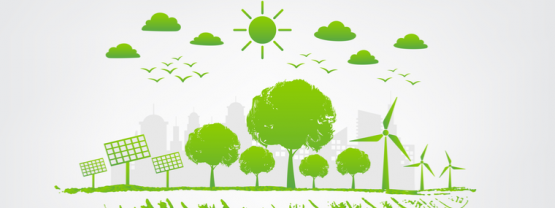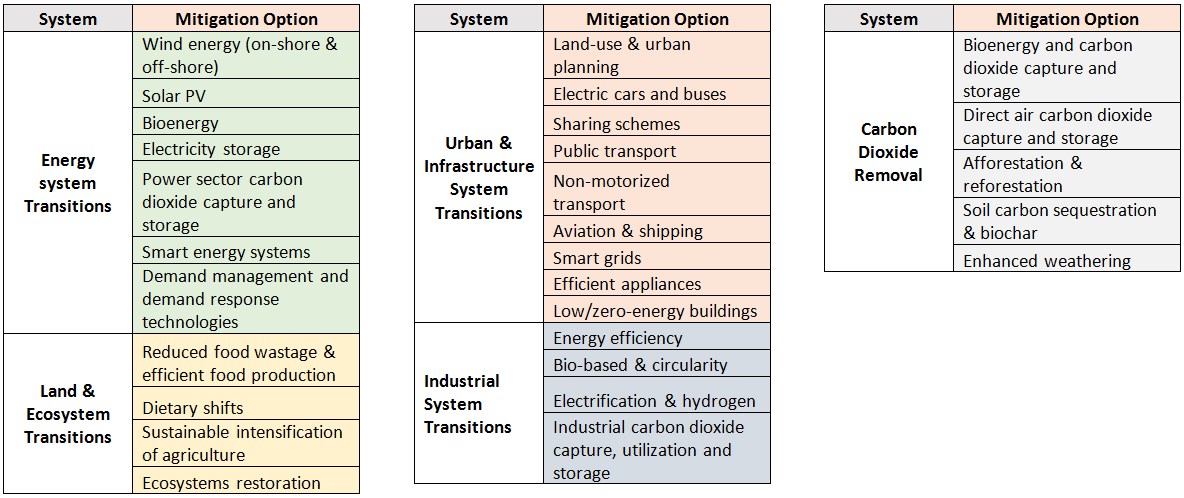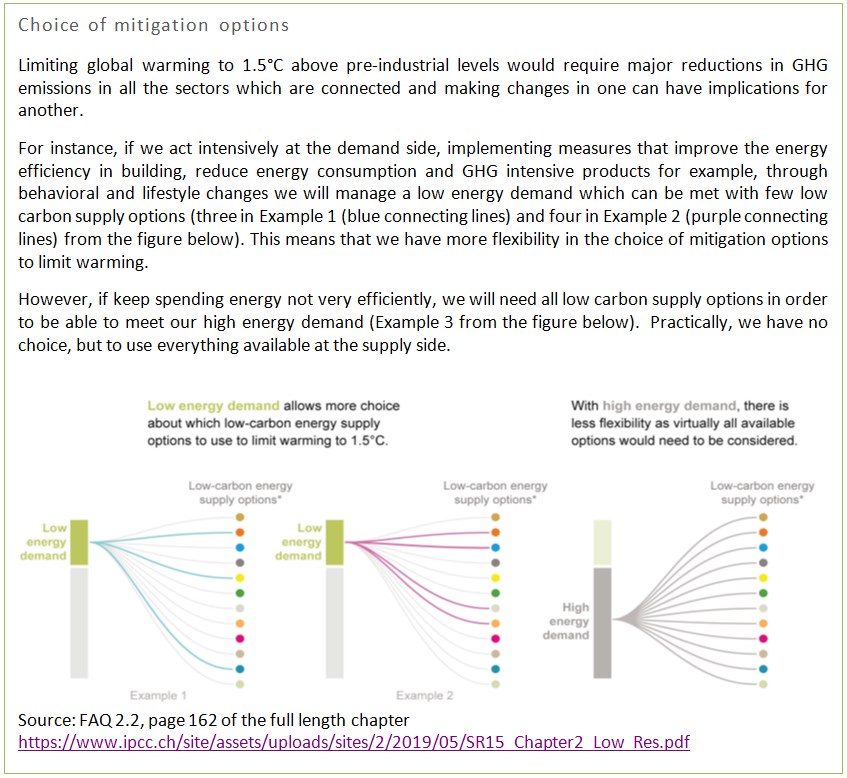Climate change mitigation perspectives related to the latest IPCC report
No one should be left behind!
- {{"article.by"|translate}} Emilija Mihajloska (SDEWES) and Natasa Markovska (RCESD-MANU)
- {{"article.posted"|translate}} 01-06-2020
Climate change mitigation perspectives related to the latest IPCC report
No one should be left behind!
The latest science finds that if we fail to limit warming to 1.5°C, the impact of climate change will dramatically increase. This means droughts, floods, sea level rise, extreme heat and other weather conditions with enhanced intensity and frequency, endangered economic growth, not to mention human lives. The worse is yet to come if we don’t tackle climate change.

Importance of limiting global warming at 1.5°C
Climate-related risks for natural and human systems are considerably higher for global warming of 1.5°C than at present, but several times lower than at 2°C, depending on the geographic location, levels of development and the realization of adaptation and mitigation options.
Growth, survival and abundance of a wide range of species are endangered with the level of ocean acidification due to increasing of the CO2 concentrations. The same situation is on land with impacts on biodiversity and ecosystems, including species loss, forest fires, species climatically determined geographic range loss and spread of invasive species that is frightening even for global warming at 1.5°C. There are many climate-related risks to health, livelihoods, food security, water and energy supply and for example, limiting global warming at 1.5°C allows several hundred million people to be less exposed to related risks and to poverty by 2050 compared to the case of global warming at 2°C.
Long-term strategies and nationally determined contributions: key components of climate action..
Tackling climate change not only mitigates the impacts, but also creates other benefits, such as $26 trillion in economic benefits through 2030 as the Global Commission on the Economy and Climate estimates. It would also create 65 million jobs and avoid around 700,000 premature deaths due to the air pollution. The Nationally Determined Contributions (NDCs) and long-term strategies would help to provide these and many more benefits at the nexus of climate and economic development.
Although 2100 is far away, it is much needed to discuss the 2100 global warming projections, based on pledges and current policies. Warming projections for the baseline scenario are in the range 4.1°C -4.8°C by 2100, but if all the governments fully implement their NDCs the global temperature increase in 2100 compared to pre-industrial levels will be between 2.6°C and 3.2°C. Also, scientists simulate warming projections for 2°C and 1.5°C with pledges that are much more ambitious, but still achievable.
… as well as, sector transitions!!!

To achieve the desired CO2 emissions reductions that limit global warming to 1.5°C without or limited overshoot, it is necessary to include different portfolios of mitigation measures (as this table shows), striking many balances between lowering energy and resource intensity, rate of decarbonization and the reliance on Carbon Dioxide Removal (CDR). Various portfolios face different implementation challenges and potential synergies and trade-offs with Sustainable Development (SD).
Carbon pricing (carbon taxes or emissions trading systems), efforts to save on fossil fuel subsidies are part of a wider policy package to cope with climate change in energy transitions. Both, incomes and fossil fuel savings could reach $2.8 trillion in 2030, in order to reinvest in public priorities, such as net job growth, better health outcomes and a general advancement of economic activity. Electrification, cleaner fuels and vehicles are ways to reduce the emissions impact from the transportation sector which is directly linked to the energy transition.


Sustainable future
Combined long-term strategies and NDCs are essential to ensure sustainable future. Long-term strategies help envision the future and create pathways that achieve Sustainable Development Goal (SDG) targets, besides country’s ambitious climate goals. IPCC has woven the idea of sustainable development into recent evaluations, showing the synergies between sustainable development and climate change. Climate change is a part of the SDGs and requires urgent actions like strengthening resilience and adaptive capacity to climate-related hazards and natural disasters, integrating climate change measures into national policies, improving education, awareness-raising, human an institutional capacity. Combination of adaptation and mitigation options implemented in a participatory and integrated way can allow rapid, systemic transitions in urban and rural areas, but their net effect depends on the speed and size of changes, the composition of the mitigation portfolio and the management of the transition.
The idea of climate - resilient world seems appealing for all
Pathways to 1.5°C include aspiring reductions in emissions and strategies for transformational adaptation and complex interactions with sustainable development, poverty and inequalities problems, which is the core of the climate-resilient world. The idea of climate-resilient development pathways is to combine adaptation and mitigation for reducing climate change and its impacts with a transformation of our business-as-usual attitude into a societal attitude. For example, many countries have adopted clean energy and sustainable transport while creating environmentally friendly jobs and supporting social well-being programs to reduce poverty. This kind of transition movement promotes equitable and resilient communities through low carbon living, food self-sufficiency and citizen science.
According to global mean surface air temperature projections, the estimated remaining carbon budget is 580GtCO2 for a 50% probability and 420GtCO2 for a 66% probability of limiting warming to 1.5°C, with options of temporarily exceeding the target and returning later on in the century. In terms of emissions, the world is given a 66% chance of hitting the 1.5°C target if it becomes carbon-neutral by 2047, and 50% chance if carbon-neutrality is achieved by 2058. The timing of action and the choice of measures are crucial, and definitely we need to change electricity sourcing to renewables only by 2050 and to put sufficiently high price on greenhouse emissions.
And no one should be left behind!
-
Корисни линкови
26-01-2021 -
Справување со климатските промени и загадувањето на воздухот во градот Скопје
29-04-2018 -
Финансирање во климата
28-01-2022 -
Микронаративи
08-06-2022
{{"article.lastestPosts"|translate}}
-
Нови финансирања за унапредување на природата и биолошката разновидност на Зелената агенда за Западен Балкан
11-03-2025 -
Започна проектот за развој на 1-от и 2-от двогодишен извештај за транспарентност и 5-от национален извештај за климатски промени на С.Македонија
04-03-2025 -
Земјоделски форум за климатски промени: Се изнаоѓаат решенија за поголема климатска отпроност на заемјоделието
02-12-2024 -
Заврши COP29, центарален фокус на финасирањето за климата
02-12-2024




 Мод за знаковен јазик
Мод за знаковен јазик Говорен асистент
Говорен асистент Означи линкови
Означи линкови

 Зголеми маус
Зголеми маус